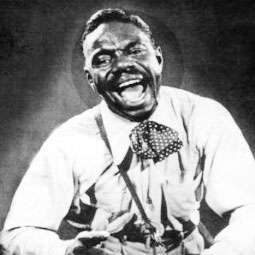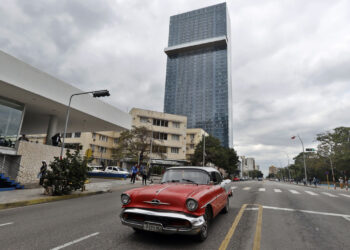In the documentary Buscando a Chano Pozo (Seeking Chano Pozo), the myth is presented in all its glory. Isolina Carrillo, for example, believes that he was not a brave man. Or maybe, she seems to say later, he was a brave man, but because he was fighting for his own.
Once, she says, he got angry and demanded a larger sum for his copyright and next month they shot at him and missed at the gate of a building.
Chano Pozo is an archetype, only with the gift of art. Even with the gift of art he is still an archetype, but more refined and attractive. He was an Abakuá, a native of a tenement building, chronicler of that tumultuous life, cocky, boastful, dancer, rumba virtuoso. He was worshiped in Havana. He was ugly, had somewhat drooping shoulders, but he was respected.
What was his plus? The bonus of being. He had the plus of having in his blood a couple of centuries of maroons, an innate rhythm and the mystical language of the drums. The communion of the music seemed to have saved him from violence, or poverty.
In one of his anthological photos, Chano Pozo looks like an African king. Perhaps as he were a simple royal subject. Perhaps as a stirrer at fairs. In either case, a man taken by ecstasy.
The open mouth, white shirt, suspenders on his shoulders, an elegant bow at the neck, the contortion of the face, the sweat running, sure hands drumming on the leather. Anyway, all that waste arrives in 1942 at New York’s skyscrapers and trams and the beggars and the lighting at night. The eternally frenzied city in a country that didn’t seem to be at war.
He opens a Latin club in the Paladium. Somebody recommend it to Dizzy Gillespie and Gillespie decides to hire him. Chano introduces the drummers in jazz, and they released-all that by 1947 – the legendary Manteca.
Years later, Gillespie would say that no foreign music was so influential in the evolution of jazz as Cuban music.
Near the end, there is a moment of special value. He discovers a young Gonzalo Rubalcaba who does not speak, hardly stands out, but plays the piano. That is, he speaks twice. In Paseo, the only disc I’ve heard by Rubalcaba, we can infer in a few meters, and in some also silences the ailing hooting of Chano’s spectrum….
In times of crisis, when everything was collapsing in Cuba and the Cuban identity wasn’t found either in literature, or the arts, or philosophy, or politics, there was always a stronghold in music and another in religion.
On December 3, 1948, in Harlem, at the Río Café in Lenox and 111, for a simple argument about unpaid debts, a former Marine drew his revolver and shot Chano Pozo. He was murdered, of course.
He had the gift of art. He was a fugitive inside. He was brave, boastful, but jazz was something else. He was born in a tenement building.







.jpg)

